Learn two simple kombu dashi recipes: a cold‑brew and a hot‑brew method using dashi kombu, perfect for vegan and traditional Japanese cooking.
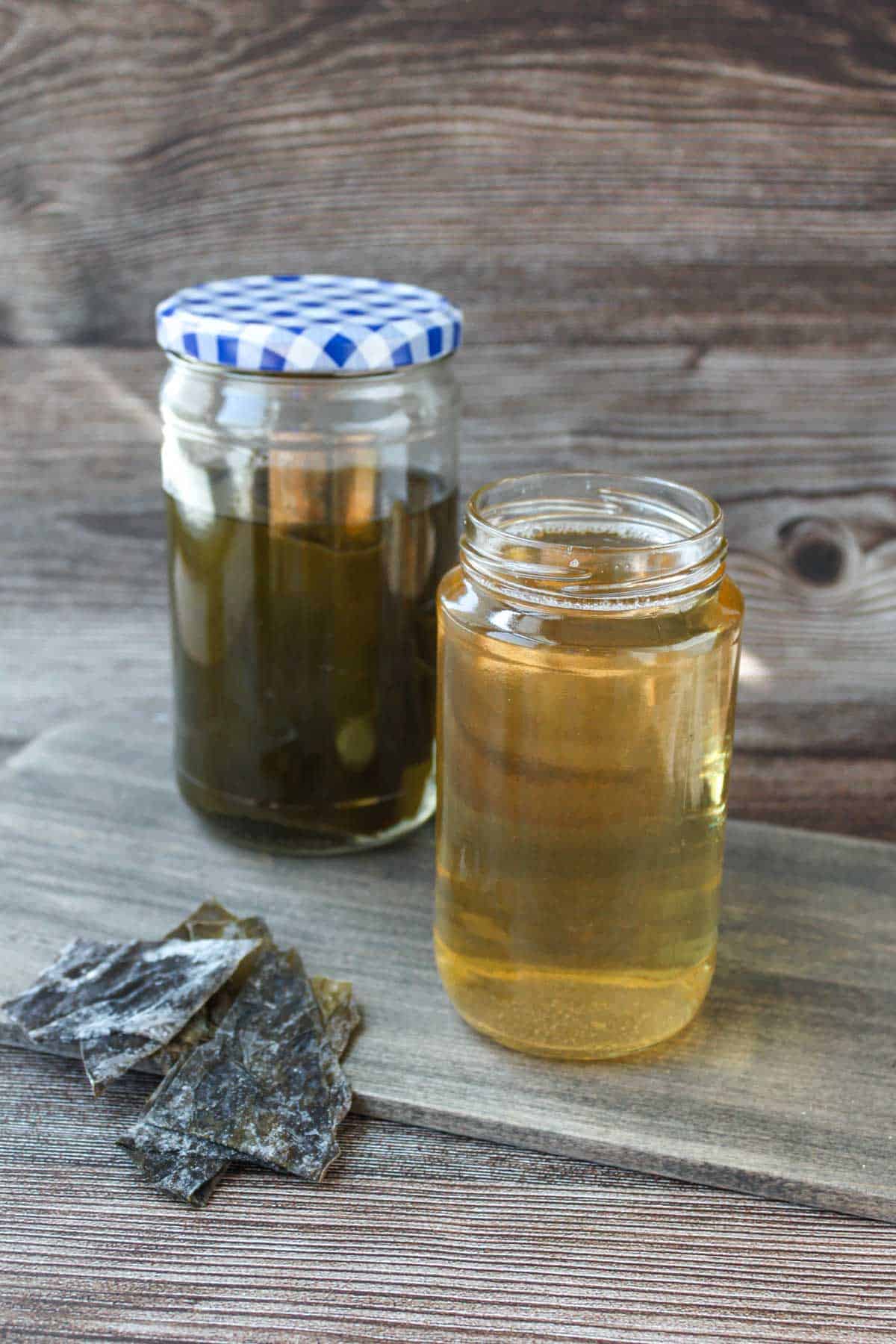
Traditional ways of making kombu dashi can be a little tricky. You need high-quality kombu and a special tool to maintain the ideal water temperature to extract the umami properly.
But in this recipe, I’ll show you two simple ways to make flavorful kombu dashi without any special equipment, so you can make it at home without the hassle!
Stock up on this kombu dashi to make awase dashi or vegan dashi, or simply use it for simmered dishes and miso soup.
💡Curious about dashi? Check out my complete Dashi Guide to learn all about it!
Why You'll Love This Recipe
- Low-stress and practical: I’ll guide you through two easy methods for making kombu dashi, so you can pick the one that fits your daily rhythm, whether you’re short on time or ready to enjoy a slower pace in the kitchen.
- Adapted for home cooks outside Japan: I’ve made a few thoughtful adjustments to ensure this recipe works well, even if you don’t have access to premium kombu, specialty ingredients, or soft water. No matter where you live, you’ll still get a flavorful, comforting dashi.
- Customizable and versatile: I’ll walk you through how to adjust the kombu-to-water ratio depending on how you plan to use your dashi, whether it’s for miso soup, dipping sauces like mentsuyu, or anything else your heart (and taste buds) desire.
Notes on Ingredients
See the recipe card for the full ingredients list.

Kombu (Dried Kelp)
In Japan, four main types of kombu are commonly used to make dashi: Rishiri, Ma, Rausu, and Hidaka.
Each variety brings a slightly different depth and nuance to the broth, so if you can, try to use high-quality kombu specifically labeled for dashi.
But if you're in the U.S. and have limited access, or you're looking for a more budget-friendly option, here’s what to look for:
- Large, whole sheets (not thin strips or chopped pieces)
- Thick and sturdy texture
- Labeled as “dashi kombu” or “kombu for soup stock”
I personally tested WEL-PAC Dashi Kombu, and it delivered great results!
👉 Pro tip: That white dust on the kombu? It’s not mold, it’s naturally occurring glutamic acid, which gives kombu its signature umami. Don’t rinse it off! You’d be tossing the flavor!
👉 Why not just use MSG instead?
While MSG mimics the umami taste, kombu offers more than just flavor. It’s rich in minerals and naturally occurring nutrients that support a balanced, wholesome diet.
Water
The type of water you use can make a big difference in your dashi. Soft water helps extract more umami, resulting in a cleaner, more flavorful broth.
On the flip side, hard water, which contains higher levels of calcium and magnesium, can make dashi taste dull or even bitter, and it may turn cloudy.
Since most tap water in the U.S. tends to be on the harder side, I recommend using a simple water filter like Brita. It’s an affordable, low-waste way to get better-tasting dashi—without having to rely on bottled water.
💡You can find kombu and other ingredients at Japanese or Asian grocery stores, or order them online from places like Amazon or Weee!.
Substitutions and Variations
- Kombu: No kombu? No problem! You can still make tasty dashi by using other types like katsuo dashi, which is made with bonito flakes, iriko dashi made from dried anchovies, or shiitake dashi for a great plant-based option. For a quick umami boost, you can also try dried shiitake, savory veggies like dried tomato or celery, or even a pinch of MSG if you're open to it. These swaps don’t fully replicate kombu’s flavor, but they’ll still give you a delicious broth that works beautifully in soups and simmered dishes.
- Shortcut Options: Need dashi in a pinch? If you forgot to soak your kombu or you're just short on time, kombu dashi powder is a great emergency option to keep in your pantry. It’s not quite the same as homemade, but it works well when convenience is key.
Ideal Kombu-to-Water Ratio
You can adjust the amount of kombu depending on how you plan to use the dashi.
| Ratio | Best For | Notes |
|---|---|---|
| 2% | Low-quality kombu or hard water | May result in a stronger, slightly fishy aroma. |
| 1.5% | My recommendation | Great for cooking outside Japan, where soft water and premium dashi ingredients can be hard to find. This ratio helps bring out more umami in less-than-ideal conditions. |
| 1% | Everyday home cooking | Light, well-balanced flavor that won’t overpower other ingredients. |
For example, if you're using 1 liter of water, a 1.5% ratio means using 15 grams of kombu.
How to Make Kombu Dashi
You can make kombu dashi in two different ways, depending on your schedule and how hands-on you want to be.
Option 1: Cold Brew Method
- Lightly wipe the kombu.
- Soak it in the fridge for 8 to 12 hours.
- Remove the kombu.
💡Check out my cold brew dashi guide for more details!
Option 2: Stovetop Method
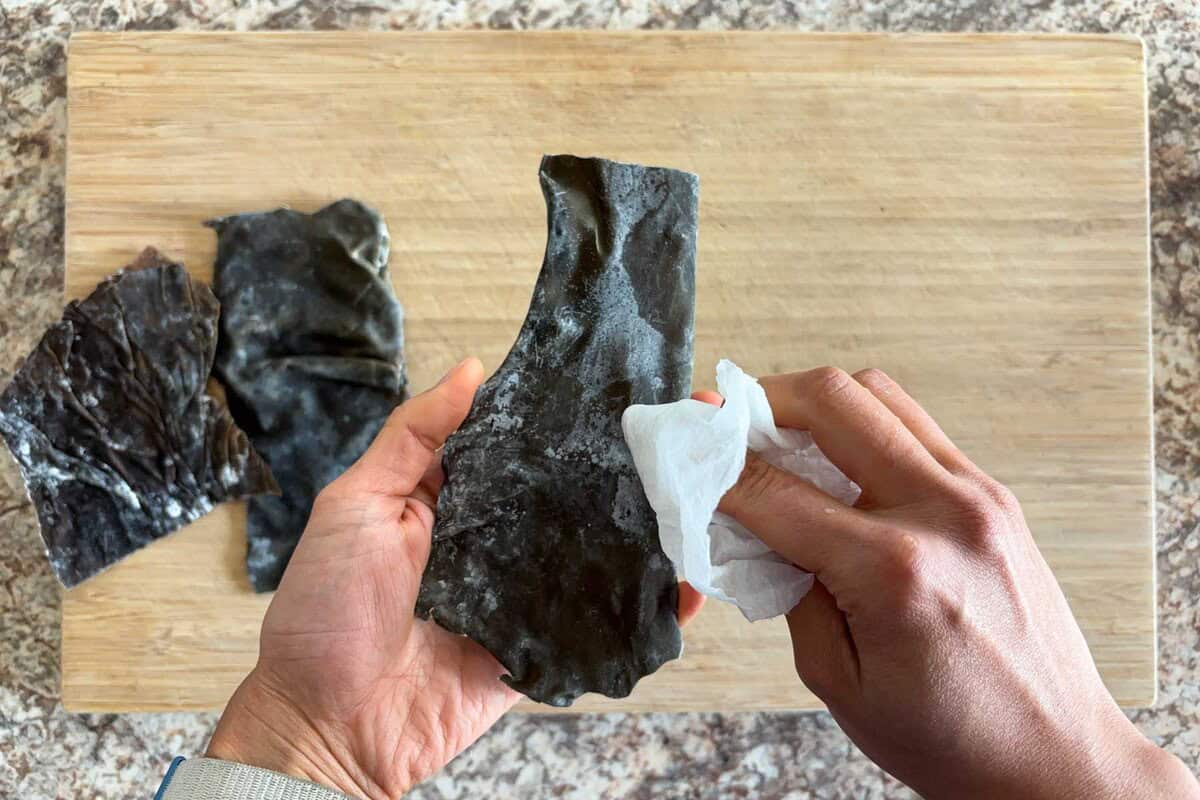
Step 1: Lightly wipe the kombu.
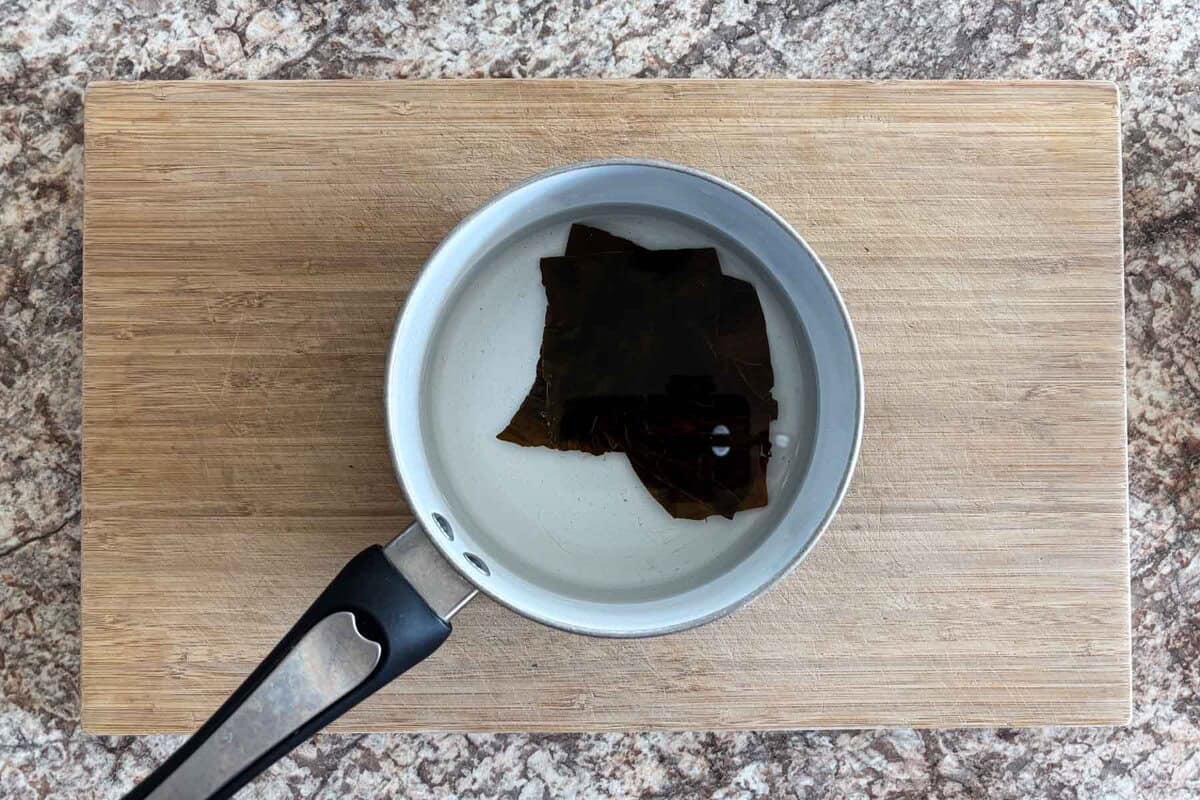
Step 2: Soak it in a pot for 30 to 90 minutes.
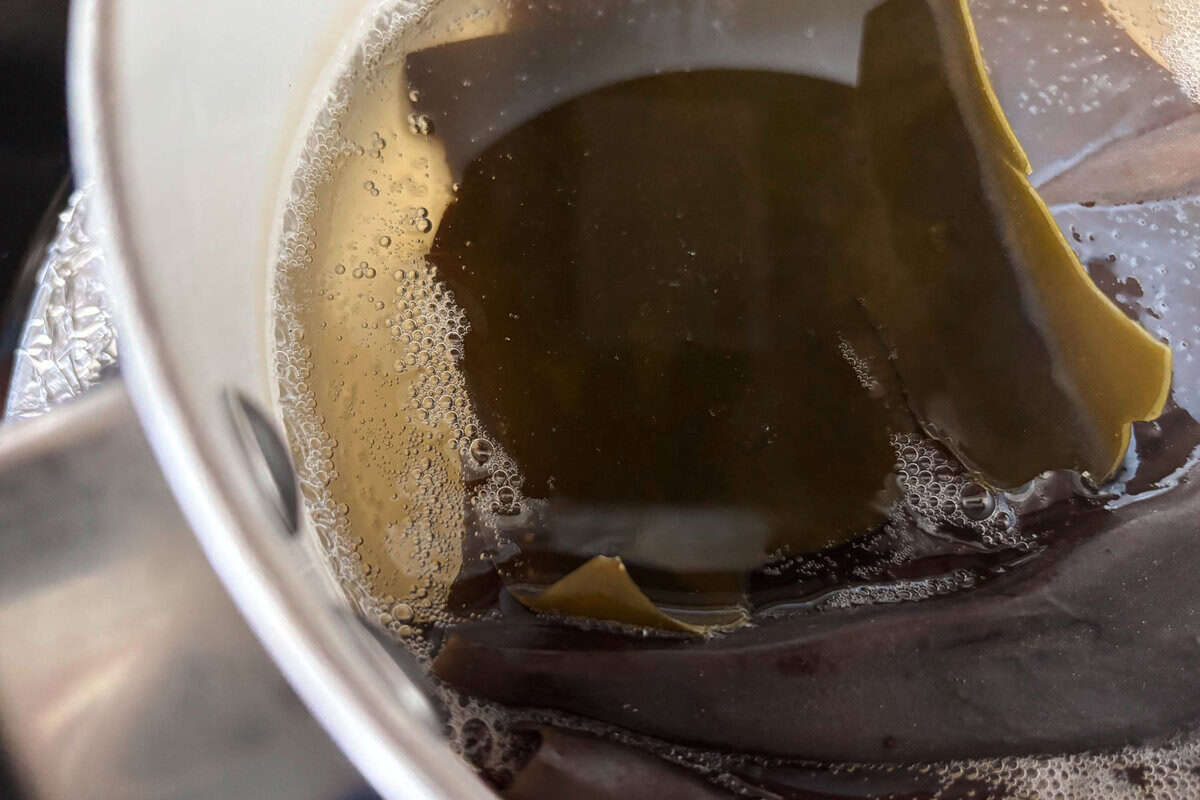
Step 3: Heat over medium-low until small bubbles form around the edges (don’t let it boil).
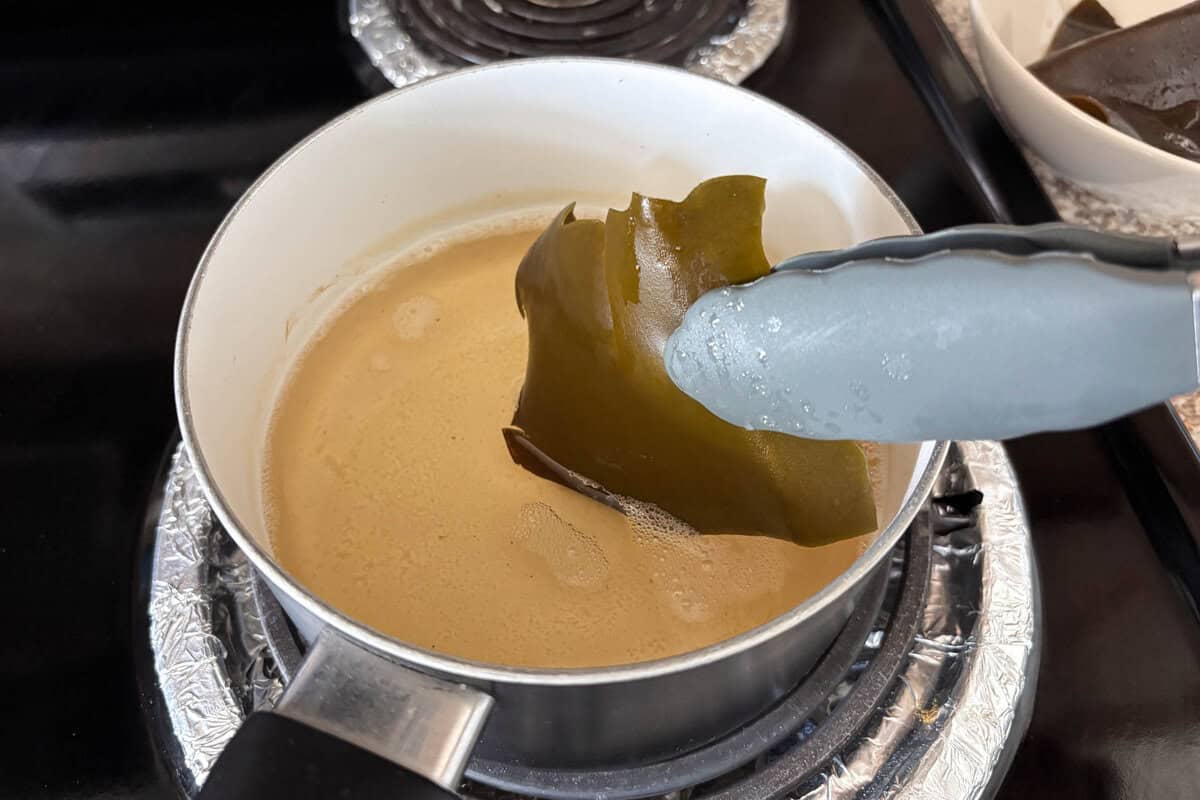
Step 4: Remove the kombu.
Reusing the Kombu
Don’t toss your used kombu just yet! You can transform it into delicious, zero-waste side dishes and seasonings. Here are some simple ideas to try:
- Furikake: Finely chop the kombu, then dry-toast it in a pan before seasoning with soy sauce and mirin. Sprinkle this savory mix over rice or vegetables to add an extra layer of umami.
- Tsukudani: Cut the kombu into thin strips and gently simmer it in a blend of soy sauce, mirin, and sake until tender and flavorful. It keeps well in the fridge and is perfect alongside a bowl of rice.
- Onigiri Filling: Use tsukudani as a savory stuffing or mix-in for your rice balls to give them a rich, umami-packed twist.
- Dashi Ponzu: Soak chopped kombu in ponzu sauce to infuse it with deeper umami notes, making it an excellent accompaniment for grilled dishes like salmon.
- Dashi Soy Sauce (Dashi Shoyu): Infuse soy sauce with your used kombu to create a versatile, umami-rich condiment—ideal for stir-fries, tofu, or fried rice.
Kurumi's Tips
- Don’t rinse the kombu: That white powdery coating on kombu isn’t mold, it’s a natural umami-rich substance called glutamic acid. Never wash off this powder, as it’s essential for the kombu’s flavor.
- Soak kombu before heating: Ideally, kombu should be steeped at around 60°C for about an hour to extract maximum flavor. Since maintaining that exact temperature at home can be tricky without special tools, a simple alternative is to soak the kombu in water for 30 to 90 minutes before gently heating. This method helps bring out its rich umami without any fuss.
- Keep an eye on the pot: Temperature control is key when making dashi. Kombu releases the best umami around 60°C, which you can spot when tiny bubbles start appearing on the bottom or edges of the kombu. As soon as you see this, remove the kombu immediately to prevent the broth from becoming slimy or bitter.
- Avoid cutting the kombu: While some recipes recommend scoring or slicing kombu to boost flavor extraction, this can sometimes result in an unpleasant sliminess or harsh taste. Since we’re soaking and gently warming the kombu, leaving it whole is best. You’ll still get plenty of delicious umami.
How to Use Kombu Dashi
Kombu dashi has a subtle, lingering umami flavor, so it works best when combined with other umami-rich ingredients like animal products or dried shiitake mushrooms.
It also makes an excellent base for creating even more flavorful dashi varieties, such as awase dashi (kombu plus bonito flakes) and vegan dashi (kombu plus shiitake).
Storage Instructions
- Dashi: Store in an airtight container for up to 3 days in the fridge or 2 weeks in the freezer (ice cubes work great for small portions).
- Used kombu: Pat dry and store in an airtight container for up to 1 week in the fridge or 1 month in the freezer.
FAQs
Kombu dashi is a flavorful Japanese broth made by soaking dried kelp (kombu) in water. It’s rich in natural umami and nutrients, forming the base for many traditional Japanese dishes like soups and simmered recipes.
Good kombu is thick, long, wide, shiny black, and properly dried. Kombu that is thin, brittle, faded, or overly dry may be poor quality or old. The white powder on kombu isn’t mold, it’s natural umami crystals, so there’s no need to worry about it.
Kombu dashi can become bitter or slimy if kombu is simmered for too long or at too high a temperature, soaked excessively, or if too much kombu is used. While the texture might be off, the dashi is still safe and tasty. Mask sliminess by using it in miso soup or simmered dishes with other ingredients.
Explore Other Types of Dashi
Kombu dashi is just one variety among many flavorful types of dashi, each bringing its own distinct taste and purpose to Japanese cooking.
Curious about what sets them apart or how to pick the perfect one for your recipes? Take a look at my Ultimate Guide to Dashi, where I break down the essentials, share ingredient tips, and help you discover the ideal dashi for your kitchen.
Want to explore more? Here are some other tasty dashi recipes to try:
- 🌱 Vegan Dashi
- 🐟 Bonito Dashi (Katsuo Dashi)
- 🐟 Iriko Dashi (Dried Anchovy)
- 🥣 Awase Dashi
- 🍄 Shiitake Dashi
- 🌿 Kombu Dashi (this one!)
🎁Grab your FREE dashi cheat sheet! Stick it on your fridge and skip Googling recipes every time 🙂
💌 If you tried this recipe and liked it, I’d love to hear from you! Leave a comment and review below, or send a photo of your dish to my email. I’d be so happy to see your creation!
📖Recipe
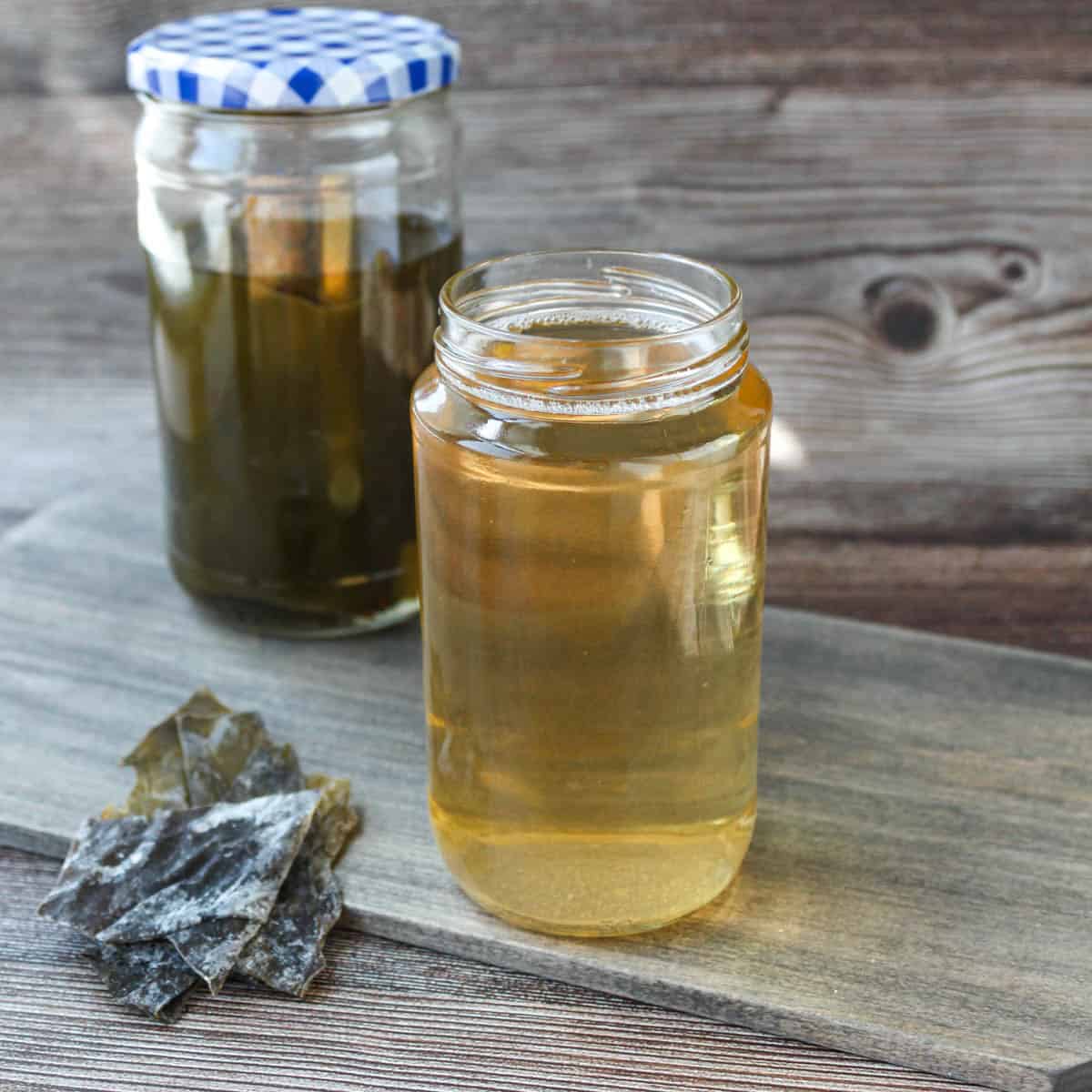
Kombu Dashi (Vegan, 2 Easy Methods)
Ingredients
Method
- Gently wipe 15 g dried kombu with a damp, squeezed-out paper towel to remove any dust. Don’t scrub, keep that white powder! It’s natural umami.
- Add kombu to a container with 4 cups filtered water.
- Cover and refrigerate for 8 to 12 hours.
- Remove the kombu.
- Add kombu and 4 cups filtered water to a pot. Let it soak for 30 minutes to 90 minutes.
- Heat over medium-low for 20 to 30 minutes, or until small bubbles appear around the edges of the kombu. You should see some steam and smell the kelp. If the thickest part feels soft when you press it with your fingernail, it’s ready.
- Remove the kombu.
Notes
- Water: Soft water pulls out more umami. Use filtered water (like Brita) if your tap water is hard.
- Kombu (Dried Kelp): Go for thick, sheet-style kombu like WEL-PAC. Ma or Rishiri kombu is best, but rare outside Japan. If yours is thin, use a bit more. Don’t rinse off the white powder, it’s natural flavor.
- Substitutions: In a pinch, use kombu dashi powder. Or try other dashi types like shiitake, bonito, or katsuo dashi.
- Ingredient Ratio (to Water):
- 2% = Stronger flavor; good for low-quality kombu or hard water
- 1.5% = Ideal for home cooks outside Japan
- 1% = Light, everyday dashi
- Reusing Ingredients:
- Furikake (pan-toast with soy sauce/mirin)
- Tsukudani (simmer with soy sauce, mirin, sake)
- Onigiri filling
- Dashi soy sauce (soak in soy sauce)
- Dashi ponzu (soak in ponzu)
- How to Use Kombu Dashi: Use it as a base for miso soup, simmered dishes, or to make awase dashi and vegan dashi.
- Storage Instructions:
- Dashi: Store in an airtight container for up to 3 days in the fridge or 2 weeks in the freezer (ice cubes work great for small portions).
- Used kombu: Pat dry and store in an airtight container for up to 1 week in the fridge or 1 month in the freezer.
🎁FREE Dashi Cheat Sheet
📌Pin This Recipe For Later!
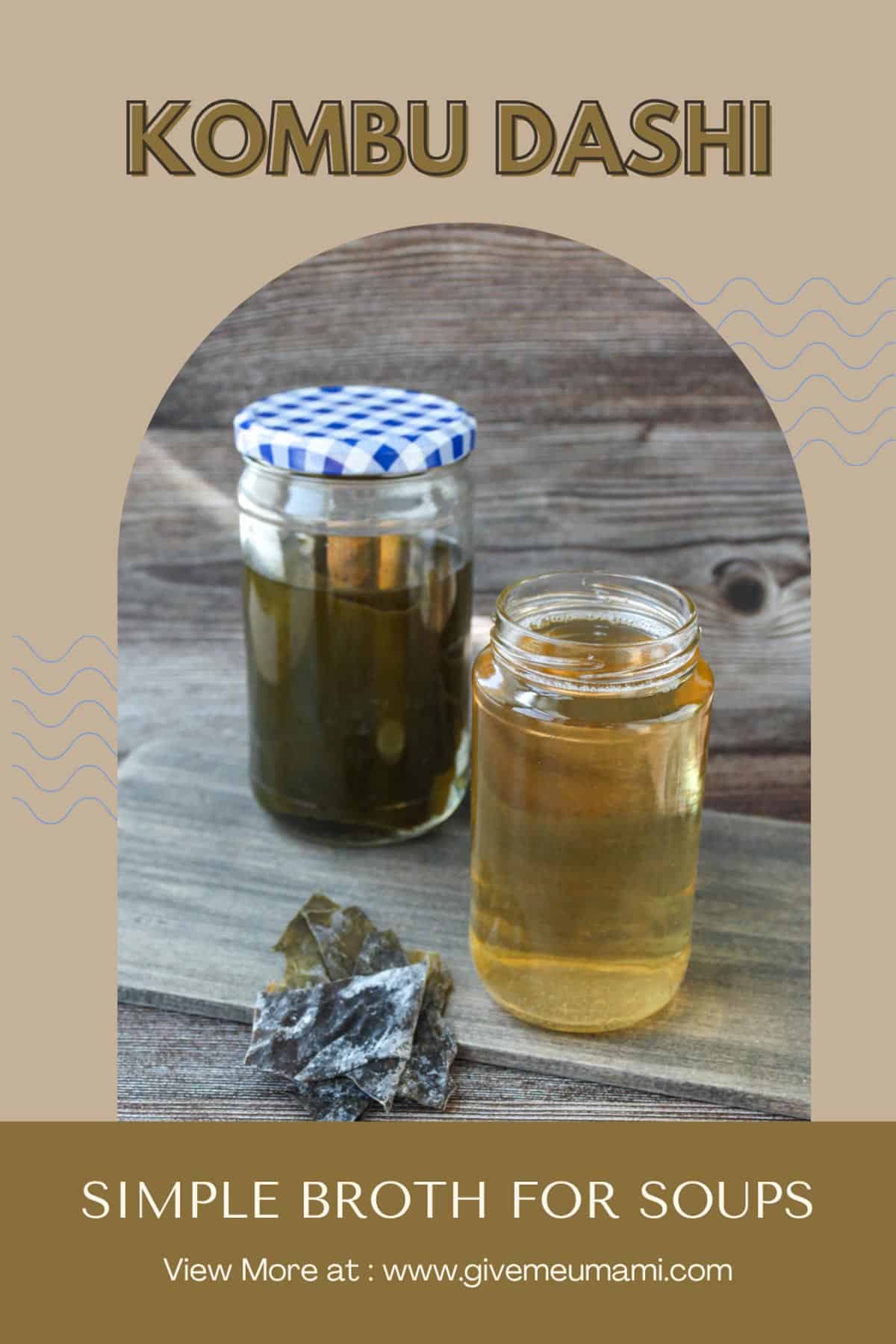

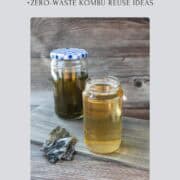
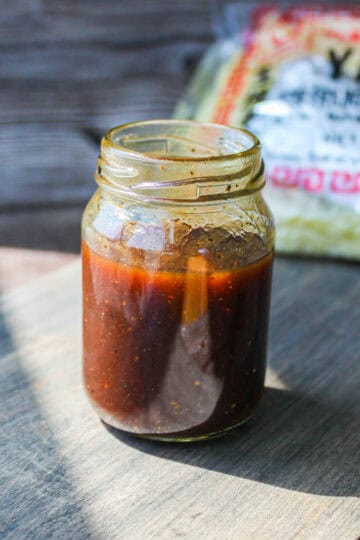

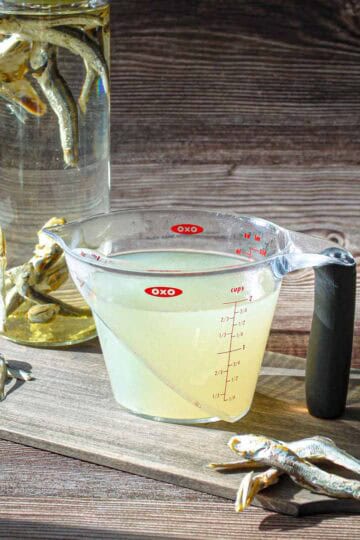
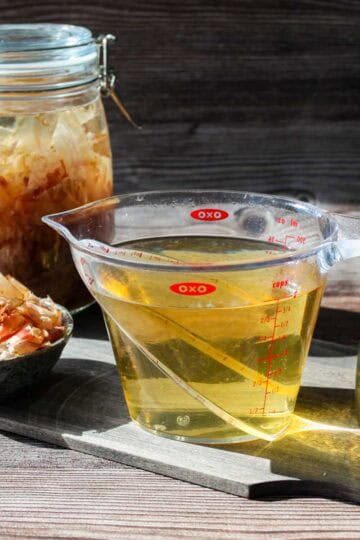
Kurumi says
Kombu dashi doesn't have a strong umami flavor, and that's exactly why it's so versatile and can be used in many ways! Its long-lasting, elegant umami taste will level up your everyday dishes. One thing I really love about making kombu dashi is getting the spent kombu. I love whipping up simple side dishes with it 🙂 I hope you’ll enjoy the elegance of kombu dashi too!